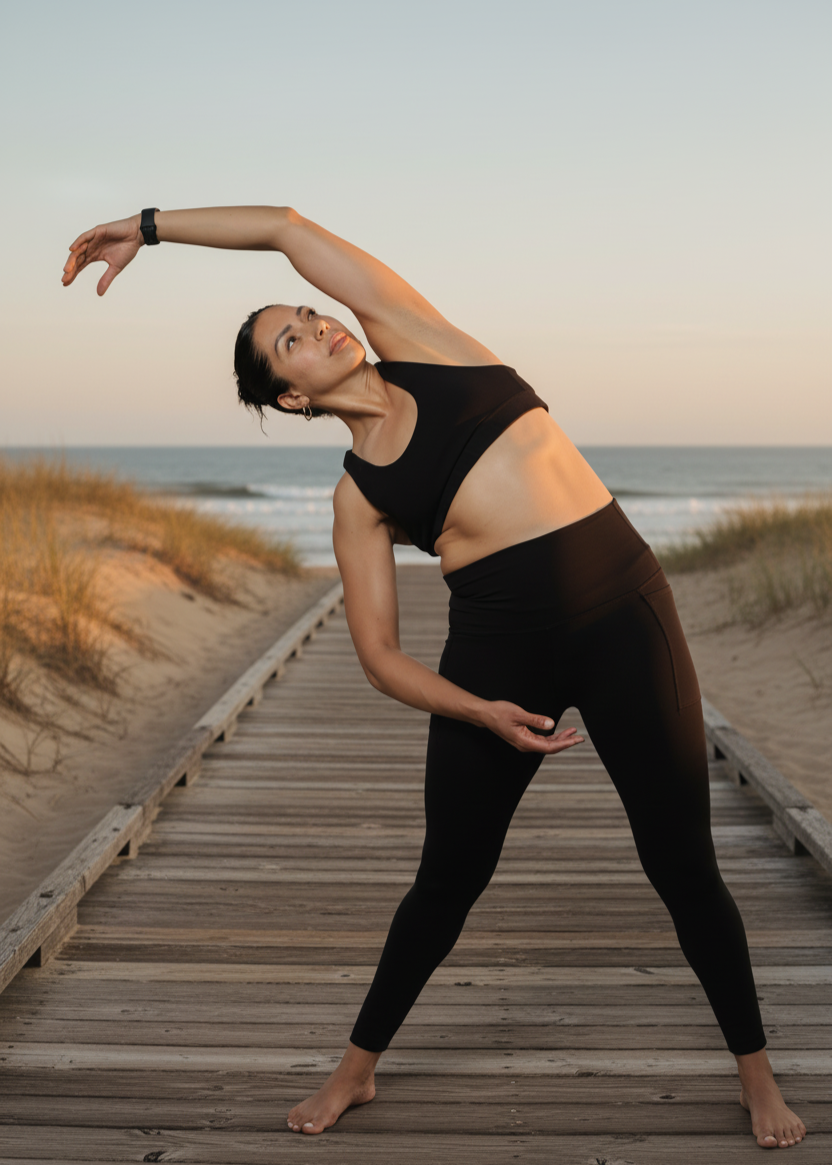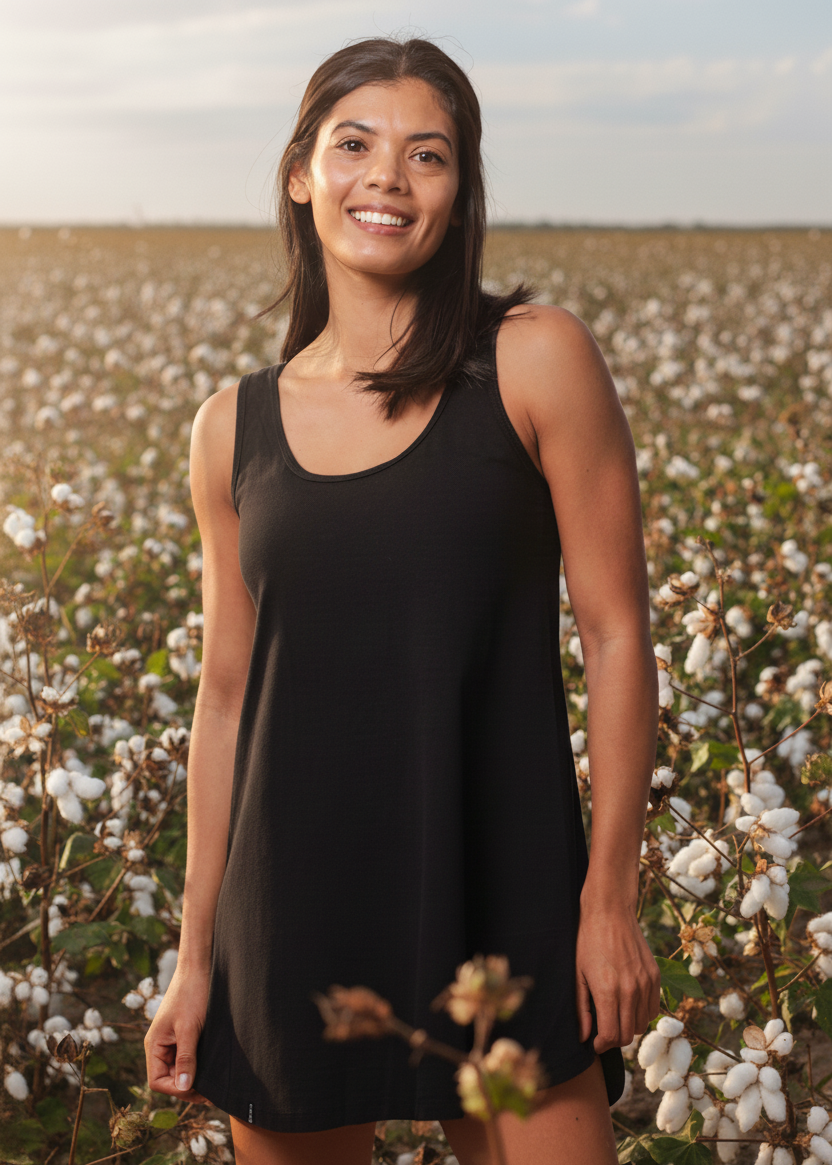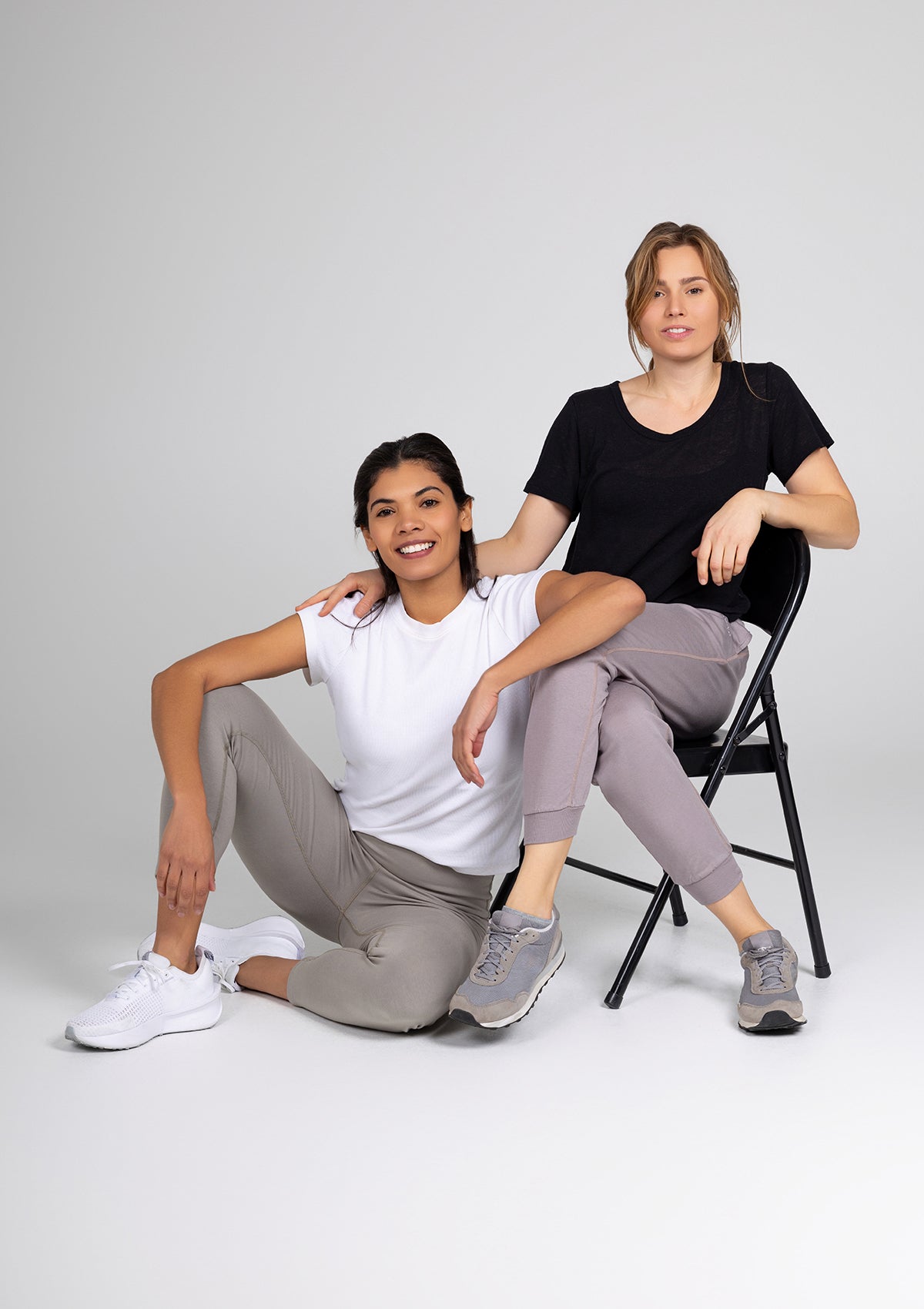
What to Look For When You Buy Organic Cotton Clothes?
You want to buy better, but the labels can be confusing. The word "organic" is on everything from women's organic tees to soft baby clothes.
But what does it mean? One tag might say made with organic cotton, while another is GOTS-certified organic cotton. It’s hard to know what is truly ethical.
This guide gives you a simple checklist for your next purchase, whether it’s organic cotton socks or a shirt made from organic cotton gauze. We will show you exactly what to look for, from the fabric to the dye.
We’ll also touch on other important terms, such as fair trade and recycled materials. Knowing these key things helps you confidently choose genuinely sustainable organic cotton clothes that are better for you and the planet.
First, A Quick Reminder: Why Choose Organic Cotton?

Before we delve into the details of what to look for on a label, let's briefly recall why this choice is important. Many fashion brands, from major names to smaller ones like Mate the Label, are transitioning to natural, organic cotton.
They understand that the story of our clothes begins with a single seed. Choosing organic is a conscious decision to support a healthier process from the soil to your closet.
It's about choosing a better fiber for yourself and the planet, whether it’s for women's clothing or soft kids' clothes.
Here’s why choosing organic cotton is a good idea:
- It’s Softer and Better for Your Skin: Because it’s grown without harsh chemicals, GOTS-certified organic cotton is less likely to irritate your skin. This makes it perfect for organic basics, such as underwear and organic cotton socks.
- It Protects Water: Organic farming cultivates healthy soil that retains water more effectively. This means it uses much less water than conventional cotton farming.
- No Harmful Pesticides: It keeps toxic chemicals away from the farmers, their communities, and our ecosystems.
- The Clothes Last Longer: The cotton fiber isn't weakened by chemical processing, so the resulting cotton knit fabric is often stronger and more durable.
- It Supports Ethical Production: The organic movement often includes better, safer working conditions for the people who craft the clothing.
- It's Versatile: You can find it everywhere, sometimes in items made in the USA or in blends of organic cotton and recycled materials.
The Buyer's Checklist: 5 Things to Look For in Organic Cotton Clothes

1. Look for a Real Certification on the Label
If a brand says its clothes are "organic," don’t just take their word for it. The easiest way to know it’s legit? Check the label for a real certification. That small tag can reveal a great deal.
The Global Organic Textile Standard (GOTS) is one of the most widely recognized certifications available. If something is GOTS-certified, here’s what it means:
- The fabric is made with at least 95% organic cotton, not just a small amount mixed in.
- It’s produced without toxic chemicals, including dangerous dyes that can harm people and waterways.
- The people who made it got fair wages and worked in safe conditions.
- The entire process supports ethical manufacturing, from cotton farms to finished clothes.
- It uses natural fibers and promotes eco-friendly practices in farming and production.
So, if you’re shopping for organic cotton socks, tees, or even underwear, look for that GOTS logo. It’s not just a fancy stamp.
It means the piece was made right, using raw materials from organic agriculture, and with people and the planet in mind. Real certifications help you support fair trade clothing and avoid greenwashing. No guesswork needed.
2. Check the Fabric Composition
Before you buy, flip the tag and look at what it’s made of. The fabric composition reveals a great deal about how a piece will feel, wear, and wash. This is your go-to for comfort. It’s breathable, soft on the skin, and works well for everyday basics, think t-shirts, underwear, or organic cotton socks.
When the label says "100% organic cotton," it means no blends, no surprises, just the pure stuff. That’s ideal for people with sensitive skin or anyone who wants clothing that feels natural.
Sometimes a bit of stretch is needed. If you're shopping for leggings, fitted tops, or activewear, you might see something like “95% organic cotton, 5% spandex.”
That small percentage helps the fabric hold its shape. It also keeps the clothes from sagging or bagging after a few wears. The spandex (sometimes listed as elastane or Lycra) makes things more durable, especially if you’re moving around a lot.
For a basic tee or socks? Stick with 100% organic cotton. For workout clothes, a blend is normal and often necessary. Just ensure that organic cotton remains the primary ingredient.
3. Ask About the Dye
The story of your clothes doesn't end with the harvest. While organic agriculture provides clean raw materials, the next step is adding color. The beautiful shade of your t-shirt or organic cotton socks comes from dye, and this process can have a huge environmental impact.
Traditional dyeing often uses harsh chemicals and vast amounts of water, releasing pollutants into local waterways. This part of the process is a critical piece of ethical manufacturing that is often overlooked. That's why looking for clothes made with low-impact dyes is so important. Think of these as a smarter, more eco-friendly choice.
Low-impact dyes are free from heavy metals and other toxic chemicals, making them safer for your skin and for the workers handling them.
They also require less water during the dyeing process because the natural fibers absorb it more efficiently. This focus on the entire lifecycle of a garment is a core part of what makes fair trade clothing truly sustainable.
When a brand discusses its dyeing process, it demonstrates a deeper commitment to sustainability.
Look for brands that are transparent about using "non-toxic" or "low-impact" dyes. It’s a strong sign they care about the entire journey of their clothes, from the farm that provides the raw materials to the final stitch.
4. Feel the Quality of the Fabric and Stitching
A label can tell you a lot, but your hands can tell you the rest of the story. Truly sustainable clothing is made to last, and you can feel the difference.
The most important aspect of sustainability is durability purchasing one high-quality item is often better than buying three inexpensive ones that fall apart. This is where you can become your quality inspector.
Pick up the garment. How does it feel? A well-made organic cotton tee should have a little weight to it; it feels substantial, not thin and flimsy. The fabric should feel both soft and strong, indicating that the cotton fibers are long and haven't been damaged by harsh chemical processing.
Think about the difference between a sturdy pair of organic cotton socks that hold their shape, and a cheap pair that gets holes after a few wears.
Next, look closely at how it’s put together. Check the seams along the sides and shoulders. Are the stitches small, straight, and tight?
Give them a gentle pull to see if they feel secure. Inspect the hems on the sleeves and the bottom of the shirt, as well as the collar. These are high-stress areas, and messy or loose stitching here means it won’t last long.
5. Look for Brand Transparency
A certification tells you part of the story, but the brand tells you the rest. True sustainability goes beyond a label; it’s woven into a company's mission. Trustworthy brands are happy to share their story because they take pride in how they make their clothes.
This is what brand transparency is all about: honesty and openness from the people behind the product. When you're shopping, take a moment to look beyond the product page. Go to the brand’s website and read their "About Us" or "Our Sustainability" section.
Do they talk about their factories? Do they explain why they chose organic cotton? Do they share their mission with you? A brand that is genuinely committed will provide these details. If you are buying a technical activewear shirt or a simple pair of organic cotton socks, the brand's story provides insight into its values.
Vague claims like “eco-friendly” or “green” without any proof are red flags. A brand that is proud of its process will gladly share it with you. If they aren’t sharing details, it’s fair to wonder what they might be hiding. Look for brands that invite you into their story.
H2: How This Applies to Your Wardrobe?
Knowing the rules is one thing, but let's see how this works with the clothes you wear. This simple checklist applies to everything in your drawer, from your favorite tee to your workout gear. It helps you build a wardrobe of pieces that are better for you and made to last.
For Your Everyday Tee: When looking for that perfect organic cotton tee, prioritize 100% GOTS-certified fabric and feel the material. It should feel soft but durable. This isn't a disposable shirt; it’s a quality staple that will hold its shape and softness wash after wash, making it a true wardrobe essential.
For Your Workout Leggings, here, a blend is okay. Look for clothing made from mostly organic cotton, with a touch of spandex for added movement and a better fit.
This is where checking for non-toxic dyes is particularly important, as the fabric is in direct contact with your skin while you sweat. PuraKai’s organic cotton leggings are a great example of this balance, giving you performance without compromise.
For a Simple Sock: Even a basic sock benefits from being made of organic cotton. It's more breathable and healthier for your feet, which is why so many people look for organic cotton socks. They're a small, easy upgrade that makes a daily difference.
PuraKai’s Approach to Sustainable Organic Cotton Clothes
Understanding what to look for is the first step. The next step is seeing how a brand puts those principles into practice. At PuraKai, we built our approach around that same checklist.
We don’t just use the term “sustainable” lightly, we tie it to clear, verifiable actions that you can trust. It’s about being transparent from the start, whether we’re designing a new pair of leggings or simple, everyday organic cotton socks. Our goal is to make the "right" choice the easy choice for you.
At PuraKai, we use GOTS-certified organic cotton because we believe in its benefits for both people and the planet. We focus on creating high-quality, durable essentials designed to last.
This means a commitment to using the best materials and low-impact dyes, ensuring every product is as clean and safe as it is comfortable. We believe that true sustainability comes from quality and care, creating pieces you’ll wear for years, not just a season.
You can see this commitment in our full sustainable activewear collection, where every piece is created with these principles in mind.
Conclusion: Buy Less, But Better
Choosing well is simpler when you know what to look for. So, the next time you shop, remember this checklist. Look for a GOTS label, check the fabric content, ask about the dye used, and feel the quality of the material.
Support brands that are transparent about how their clothes are made. This is how you can be sure you’re getting what you paid for.
Ultimately, choosing organic cotton clothes is about more than just buying a product. It's a simple and powerful way to vote for a cleaner and fairer fashion industry. You don't have to change your whole wardrobe overnight.
Start with one essential piece, such as a durable tee or a pair of soft, organic cotton socks, and feel the difference for yourself. Buying less, but better, is a choice that benefits everyone.






Leave a comment
This site is protected by hCaptcha and the hCaptcha Privacy Policy and Terms of Service apply.